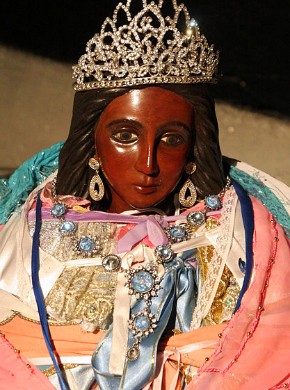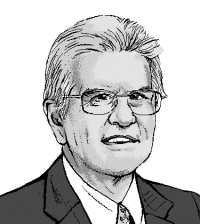The church of the Roma

More than once I have heard sane, supposedly liberal people say something like this: “Hitler tried to exterminate the Jews and the gypsies. What he did to the Jews was dreadful.” The speaker’s omission is telling.
In many European countries, gypsies—the Roma people—are major targets of xenophobia. What is perhaps little known is that Europe’s Roma are overwhelmingly Christian and becoming steadily more so.
The Roma trace their origins to lower-caste migrants who left India in the early Middle Ages. The diversity of names by which these newcomers were known testifies to Europeans’ bafflement about what to make of them. They were Gypsies (Egyptians), Bohemians, or Tzigane (from a Greek word for “untouchables”). Their itinerant lifestyle and reputed criminality made them profoundly suspect, especially as European states developed in the 19th century. The Nazis massacred perhaps half a million Romani in the porajmos (Holocaust). Even liberal states tried to eliminate this population through forced assimilation, and as late as the 1970s Switzerland was seizing children from Roma families. Despite all these assaults, Europe and Russia today still count some 10 million Romani.
Anti-Romani sentiment is an important political force in several countries of Central and Eastern Europe, especially for far right movements in Hungary and Bulgaria. In otherwise tolerant Britain and France, the prospect of mass immigration from southeastern Europe is commonly framed in terms of the dangers posed by Romani thieves and beggars. Even liberal European media still circulate stories of gypsy child-stealing.
Read our latest issue or browse back issues.
For centuries, the religious character of the Roma was somewhat mysterious. They tended to adopt the religion of the societies in which they lived, adding their own distinctive customs and traditions. Some of these offered curious traces of their Indian past. The Romani word for cross or crucifix, trushul, recalls the Hindu name for Shiva’s trident, the trishula. In Catholic Europe, Romani have long been faithful Catholics. They have a fervent devotion to the dark-skinned St. Sarah, allegedly a companion of the biblical Three Marys—though modern activists claim she is a form of the Hindu dark goddess Kali. In Turkey and much of the Balkans, most Roma are avowedly Muslim.
For an outsider—the typical gadoj—this chameleon quality suggested that Roma faith was a matter of convenience and involved no sincere conviction. In modern times, though, the growth of evangelical and charismatic Christianity has been a dominant fact of Roma life, even in countries where that faith tends to distance them even more from the social mainstream.
Protestant expansion is obvious in Bulgaria, where the Romani make up 5 to 10 percent of the population. For centuries, most Roma accepted Orthodox Christianity. Western Protestant missions made inroads in the early 20th century, and Romani translations of the Gospels date from 1912. But the real explosion followed the collapse of Bulgarian communism in the 1990s and the ensuing economic crisis. In these grim years, the Roma began a mass conversion to Pentecostal faith, drawing converts from both Orthodox and Muslim Romani communities.
Pentecostalism had an overwhelming appeal for marginal groups traditionally excluded or condemned by mainstream society. Today, Pentecostals claim a sizable majority of Bulgaria’s 800 Romani Protestant churches, and church planting continues apace. The churches themselves are purely Roma in their membership and leadership.
Apart from Bulgaria, Europe’s largest Roma communities are found in Spain, France, and Romania, which have all witnessed a Pentecostal and evangelical upsurge. (Incidentally, the name Romania has no linguistic relationship to the term Romani). Spain alone has a thousand Roma churches, and perhaps 40 percent of French Roma are evangelical or charismatic. The Roma population of Romania’s Orthodox churches is steadily bleeding away to Pentecostalism.
The new churches have had a profound impact on a community long wedded to traditional values, to Romanipen. In southeastern Europe particularly, they have helped emancipate women and promoted education. Across the continent, churches and pastors have helped wean Roma people from involvement in crime and substance abuse.
More generally, these churches teach the organizational skills and strategies the Roma need to function in a modern society and to negotiate with bureaucracies. In recent French debates over immigration and the expulsion of illegally settled migrants, Roma pastors emerged as visible advocates of community rights. The more effective the churches prove themselves, the greater their appeal for potential Roma converts.
For centuries, mainstream Europeans hated and feared Gypsies because they were not considered true Christians. It would be ironic if the flourishing Roma churches stand out as devout Christian bastions in a secularized Europe.







